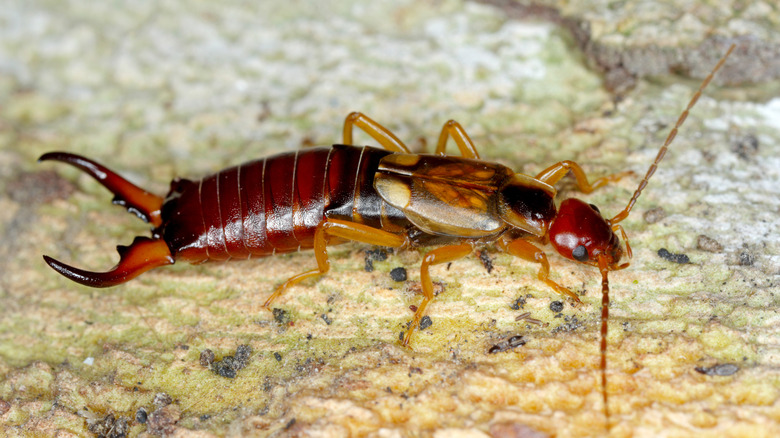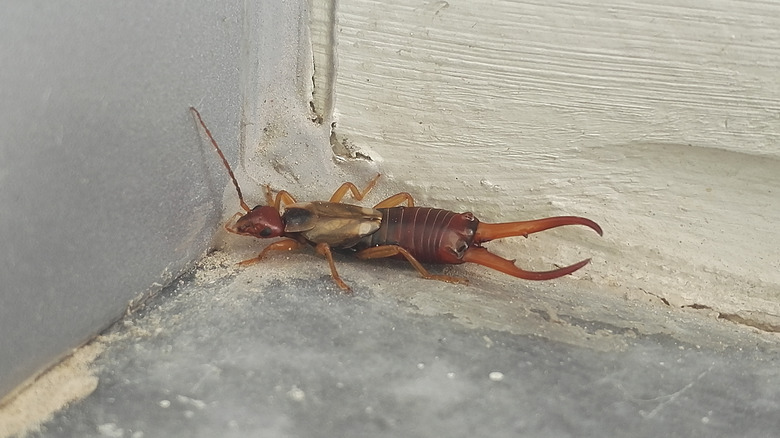Do Bay Leaves Help Eliminate Earwigs From Your Kitchen?
Bay leaves, commonly known in the culinary world, are also believed by many to be a natural deterrent for earwigs. This idea is based on the presence of eucalyptol, a compound known for its repellent properties. While bay leaves contain about 45% of this compound, it's found in higher concentrations in eucalyptus leaves, about 84%. A 2021 study in the Iranian Journal of Public Health highlighted the effectiveness of eucalyptus in repelling mosquitoes, but the research on its impact on earwigs, particularly using bay leaves, is sparse. Given the lower concentration of eucalyptol in bay leaves, their effectiveness as an earwig repellent is not guaranteed, yet it might be worth experimenting with.
Beyond just repelling these pests, knowing how to identify them, how they find their way into your kitchen, and their breeding habits is key to effectively keeping them at bay. You see, earwigs are not just occasional invaders but are also quite resilient. These small, dark insects prefer moist environments and primarily live outdoors. However, they can migrate indoors to your kitchen, especially during extreme weather conditions. They are more than a nuisance; in large numbers, they can be unsettling and potentially damaging to household plants and pantry items. Also, keep in mind that the use of bay leaves as a repellent should be part of a broader strategy to keep earwigs out of your house or manage their invasions. Even if their effectiveness is not scientifically proven, incorporating them into an integrated pest management approach could help.
Understanding earwigs: identification and kitchen entry points
Earwigs are easily recognizable by their slender, elongated bodies, which are usually about 5 to 25 millimeters in length. They also have a unique set of pincers at the end of their abdomens, which they use for defense and mating rituals. These nocturnal creatures feed on a wide range of foods, including decaying organic matter and live plants. In your kitchen, they might be attracted to food scraps, spills, or other sources of moisture. Their diet's versatility makes kitchens an ideal habitat for them, offering both food and shelter. Interestingly, earwigs don't just randomly wander into your home; they often enter your kitchen through specific access points. Arrow Termite and Pest Control Company points out that loose doors, small cracks, and crevices are common entryways for these pests.
Once inside, they tend to hide in dark, moist areas. Underneath sinks, in cupboard corners, or even within unused appliances can be common hiding spots. It's also worth noting that, while they might seem menacing due to their pincers, earwigs are not harmful to humans. They don't spread diseases, and they are generally not known to bite. Their breeding habits are also worth understanding. Earwigs lay eggs in the soil, and the females often guard the eggs and young nymphs. This maternal behavior is unusual for insects and can contribute to their rapid population growth, especially in outdoor environments where conditions are ideal.
Using bay leaves to repel earwigs
To use bay leaves as a repellent, the fresh ones are your best bet, as they are more potent, but you can use dried as well. Strategically place these leaves in earwig-prone areas, like your kitchen or any damp corner. Focus on cracks, crevices, and other cozy spots where earwigs love to hide. Spread the bay leaves evenly across these areas. You want to cover as much territory as possible to send a clear message to those uninvited guests. Remember to keep an eye on them and refresh regularly. Think of it as a routine check-up to maintain your earwig defenses.
Arrow Termite and Pest Control Company also suggests incorporating other herbs known for their repellent properties. For example, consider planting basil or mint which have been shown to also have insect-repelling properties. You can place pots of these herbs around your home as a preventive measure. This not only helps repel earwigs but also adds a pleasant aroma to your living space. It's also worth inspecting your home thoroughly, including door frames, windows, and foundations. Seal up any cracks and gaps — these are like an open invitation for the insects. And here's a nifty trick: earwigs are attracted to light, so dimming some outdoor lights could make your home less appealing to them. If they've already snuck in, don't worry. A sprinkle of boric acid in their favorite hideouts can effectively decrease their numbers.


